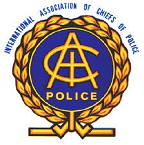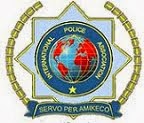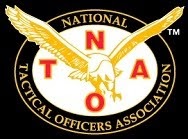url: https://upload.wikimedia.org/wikipedia/commons/2/20/Berks_County_Sheriff.png
Sheriff's Office
The history of the Office of Sheriff is really
a history of self-government. While some historians maintain that the Office of
Sheriff derives from either the Roman proconsul, or the Arab Sharif (nobleman),
it is generally accepted that the Office goes back historically to Anglo-Saxon
England, (A.D. 500-1066).
According to Anglo-Saxon custom, if someone
broke the law it was not just a crime against the victim, but a crime against
the whole community. The Anglo-Saxon kings expected their subjects to keep good
order, which they called "keeping the peace." A crime was an act
against the peace and some of the more serious crimes were said to be
"against the King's Peace." Eventually, the idea grew that all crimes
were against the King's Peace. Under Anglo-Saxon rule it was the duty of the
citizens themselves to see that the law was not broken, and if it was, to catch
the offenders. All the males in the community between the ages of 12 and 60
were responsible for this duty. They were organized in groups of about ten
families, and each group was called a "tything": At their head was a
"tythingman." Each member of the tything was held responsible for the
good behavior of the others. Ten tythings were led by a "reeve." If
one member committed a crime, the others had to catch him and bring him before
the court, or the "moot" as the Saxons called it. If they failed to
do so they were all punished, usually by paying a fine. If anyone saw a crime
he raised a "hue and cry" and all men had to join in the chase to
catch the criminal and bring him before the court. Under Alfred the Great,
(A.D. 871-901), reeves began to be combined, forming "shires" or
counties. Each shire was led by a reeve. For minor offenses, people accused of
crimes were brought before the local "folk moot." More serious cases
went to the "Shire Court," which came under the "shire
reeve" (meaning "keeper and chief of his county"), who came to
be known as the Sheriff. After the Normans conquered England in A.D. 1066, they
adopted many Anglo-Saxon law keeping methods, including the system of tythings,
the use of the hue and cry, and the Sheriff's courts. In A.D. 1085, King
William ordered a compilation of all taxable property in a census, and decreed
that the Sheriff was to be the official tax collector of the king. In A.D.
1116, King Henry I established a new penal code. While the Crown reserved to
itself the power to punish for violations of the penal code, it delegated to
the sheriff the power to investigate and arrest. Through the next century, as
the power of the King increased, so did the power of the Sheriff. During the
Westminster Period, (1275-1500), the offices of "bailiff" and
"sergeant" were created to supplement the Sheriff. However, county
government remained in the hands of the Sheriff. By the year 1300, the Sheriff
was the executive and administrative leader of the county. In addition to being
the tax collector for the King, the Sheriff was head of the local military and
was charged with assuring that the peace was maintained. The Sheriff presided
over the prisoners and the court, and his authority was unparalleled by any
other county official. When settlers left England to colonize the New World,
they took with them many of their governmental forms.
When the first counties were established in Virginia
in 1634, the Office of Sheriff in America began. Maryland soon followed this
pattern, and in both states the Sheriff was delegated the same powers as the
Sheriff held in England. As in England, respect for the Sheriff was strictly
enforced by the law. A special seat was often reserved for the Sheriff in
churches. Contempt against the Sheriff was an offense punishable by whipping.
At this time, Sheriffs were responsible for both enforcing and punishing
offenders. By the time of the American Revolution, all of the colonies had
Sheriffs. When the American frontier began to move westward, so did the
Sheriff. The 19th Century was the golden age of the American Sheriff, with
characters like Wild Bill Hickok, Wyatt Earp, and Texas John Slaughter becoming
a colorful part of American history. Today, the Office of Sheriff is found in
almost every state in the Union. The Office of Sheriff was brought to the
colony, which would become the Commonwealth of Pennsylvania by Dutch and
English colonists before the time of William Penn. The Office was
constitutionally mandated by all five of Pennsylvania's Constitutions, in 1776,
1790, 1838, 1873, and 1967. Throughout the years, the Sheriff in Pennsylvania
has acquired many and varied responsibilities and obligations. The Sheriff acts
in the capacity of peace officer, where his duty is to keep the peace and quell
riots and disorders. He has jurisdiction to make arrests anywhere in the
county, to make searches of premises, and to seize items or property owned or
used in violation of the law. He is called upon to remove certain nuisances,
and he issues licenses to sell or to carry firearms.
The Sheriff is empowered to appoint deputies,
and the deputies have the same powers as the Sheriff when performing their
duties. the Sheriff is also invested with the power of the "posse
comitatus" (the power or force of the county), which is the power to call
upon "the entire population of the county above the age of fifteen, which
the Sheriff may summon to his assistance in certain cases, to aid him in
keeping the peace, and in pursuing and arresting felons." Today, the
Sheriff, like all law enforcement officers, is faced with unprecedented
challenges. However, if history is a guide, there is little question that the
Office of Sheriff will adapt, grow, and change to meet the needs of modern law
enforcement. The Office of Sheriff is an integral part of the American law
enforcement system; a descendant of an ancient and honorable tradition.
Office of Sheriff in Pennsylvania
The office of the sheriff was recognized in the
earliest reports of English law. Throughout history, the sheriff was recognized
as the chief law enforcement officer in his shire or county. This status
remains today, unless it has been changed by statutory law. The sheriff is also
given authority to appoint deputies which are necessary in order to properly
transact the business of his office. The requirement for training of deputy
sheriffs is specifically provided by stature, i.e., the Deputy Sheriffs'
Education and Training Act (1984 P.L. 3 No.2). A review of statutory law
provides little guidance in addressing the issue of the duties, power, and
authority of a sheriff. Case law provides that, although a sheriff's primary
responsibilities are to the courts, the sheriff retains all arrest powers
he/she had at common investigation of crime. More importantly, since the
sheriff retains all arrest powers he/she had at common law, he/she has the
authority to enforce the criminal laws as well as the vehicle laws of
Pennsylvania.
Training Requirements
The requirement for training of deputy sheriffs
is specifically provided by statute. The Deputy Sheriffs' Education and
Training Act was established in 1984. (1984 P.L.3, No. 2.) The Act established
what is known as the Deputy Sheriffs' Education and Training Board as an
advisory board to the Pennsylvania Commission on Crime and Delinquency. The
board's function is to establish, implement, and administer a minimum course of
study, as well as in-service training requirements for deputy sheriffs. The
training is to consist of a minimum of 760 hours, the content of which is to be
determined by regulation. The Act also provides that it is the duty of all
sheriffs to insure that each deputy employed, who does not meet and exception,
receives the training as required by the Act within one year of being hired as
a deputy sheriff. Basic training shall consist of instruction in the topics of
Introduction to Criminal Justice, Unified Court System of Pennsylvania, Civil
Law and Procedure, Crimes Code and Criminal Procedure, Other Legal Issues,
Court Security, Prisoner Transport, First Aid/CPR, Crisis Intervention,
Families in Crisis, Firearms, Defensive Tactics, Less than Lethal Weapons,
Emergency Vehicle Operations, Communications, Ethics and Professional
Development, Technology and Law Enforcement, Physical Conditioning, Cultural
Diversity, State and Local Anti-Terrorism Training, Special Needs Groups, PA
Motor Vehicle Code, Motor Vehicle Collision Investigation/Hazardous Material,
Patrol Procedures and Operations and Principles of Criminal Investigations.
A deputy sheriff shall attain at least the
minimum score established by the Board on written tests designed for each topic
area and shall demonstrate proficiency in all practical skills in order to
successfully complete training and be certified by the Board.
Source: Deputy Sheriff Association of Pennsylvania (http://www.dsap.org/)
















Nenhum comentário:
Postar um comentário
Deixe aqui sua opinião, crítica ou sugestão.